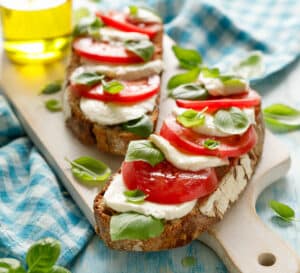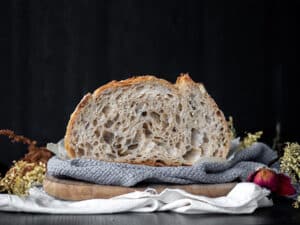The yeast-making sector, a state-of-the-art industry, controls every process in the production of baker’s yeast right up to drying, which enables yeast not only to be exported worldwide but also to be kept for household use. A key ingredient in breadmaking, yeast has not always been understood or mastered: we shine the spotlight on these micro-organisms forming the core business of the Lesaffre group.
What exactly is baker's yeast?
Bakers yeast is an agglomerate of microscopic living cells belonging to the plant kingdom. Each cell is ovoid in form and measures +/- 6 microns in diameter; if all the cells in a 500g loaf were placed end-to-end they would wrap around the earth’s circumference!
Yeast has the particular feature of being able to live with or without air and to feed on sugar:
- In the presence of oxygen, yeast breathes, consumes a part of these sugars, and produces water and carbon dioxide, energy; in this way it grows and multiplies (the core activity of the yeast producer).
- In the absence of oxygen, yeast consumes the available yeast and produces carbon dioxide (which helps the bread to rise) and aromatic compounds (giving bread its particular taste).
The role of brewer’s yeast in the production of baker’s yeast
In the time of the Egyptians and the Hebrews, yeast obtained from beer manufacturing was added to flour to make a more digestible, more aerated and more flavoursome flatbread. This technique was adopted by the Gauls, who collected the froth from beer, which comprised the yeast that had floated to the surface.
This process fell into oblivion until 1665, when a Paris baker added brewer’s yeast to his sourdough to accelerate the fermentation and improve the taste of his bread. This method would then be used until 1840 when an Austrian baker abandoned sourdough in favour of the exclusive use of yeast in the form of a liquid preparation based on water, flour and yeast called “poolish”. Due to the very long fermentation time, this process was, however, confined to the production of luxury bread specialities.
The fermentation process discovered by Pasteur
Lorem ipsum dolor sit amet, consectetur adipiscing elit. Ut elit tellus, luctus nec ullamcorper mattis, pulvinar dapibus leo.
In the 17th century, the inventor of the microscope discovered the first yeast cells, without realising that they were living organisms. In 1837, researchers confirmed that these organisms present in beer were living plants, which stimulated the production of alcohol.
In 1860, Louis Pasteur demonstrated the fact that fermentation was initiated by these micro-organisms and by yeast in particular. Finally, it was in 1872 that an Austrian baron built the first yeast factory in France.
Bread arrives in the 20th century!
The “straight” process of breadmaking developed only in the 20th century: all the ingredients required for the same batch would then be mixed all at once without prior fermentation.
After the First World War, fermentation processes exclusively based on yeast action developed rapidly: ease-of-use, reliability, no more sour flavours, fewer storage constraints and the desire to produce large amounts regularly. Bread, as we now know it, was born!




